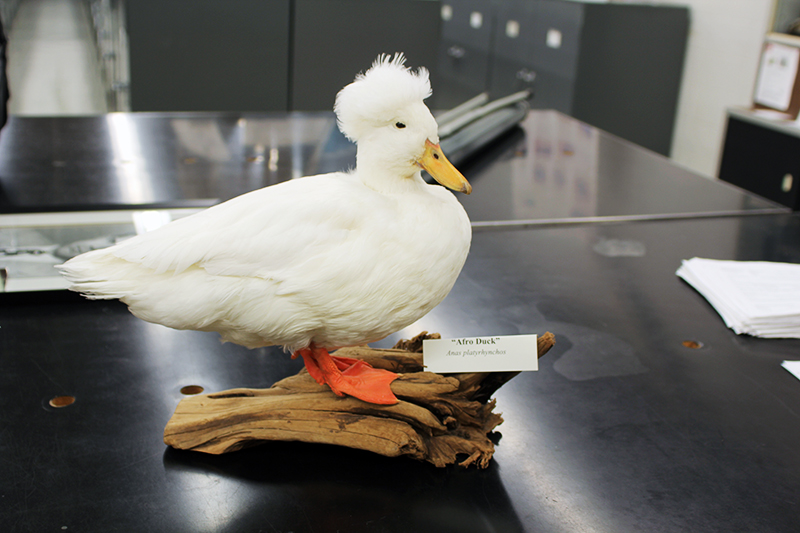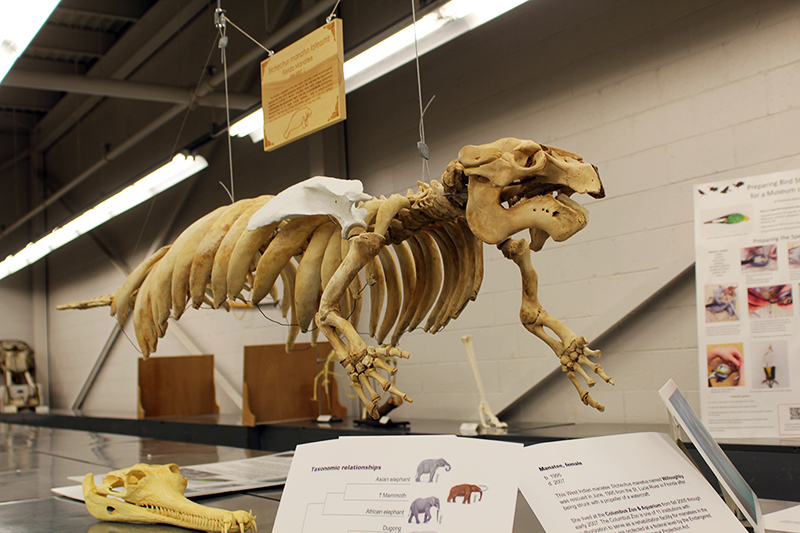Museum of Biological Diversity will feature taxidermied Afroduck

Afroduck’s final resting place is in the tetrapod collection at the Museum of Biological Diversity. The duck will be on display during the open house on April 23. Credit: Leah McClure | Senior Lantern reporter
Mammals and molluscs and spiders, oh my! All of these and more can be seen when Ohio State’s Museum of Biological Diversity holds its annual open house this Saturday. This year’s theme is Living Colors, and will include a showcase of the taxidermied Afroduck.
The open house will be from 10 a.m. to 4 p.m. and admission is free for all visitors.
Although the Museum of Biological Diversity, located at 1315 Kinnear Road, is a research facility, every year it invites the public to observe and learn about some of the creatures in its collections. Between 9 and 10 million specimens that have died have been brought to the museum in order to be studied and preserved.
The open house is set to feature a certain feathery friend. Afroduck, which died in January, was collected and brought to the museum by Chelsea Hothem, an undergraduate student working as a research assistant at the museum.
Hothem, a third-year in evolution and ecology, will be working in the tetrapod collection during the open house. She said she thinks she will be asked to rehash the “Afroduck story” many times. However, this is just one of many attractions the open house will have to offer its visitors.

A manatee skeleton that was collected from the Columbus Zoo hangs in the tetrapod collection at the Museum of Biological Diversity. Credit: Leah McClure | Senior Lantern reporter
“The museum is really such an amazing place,” Hothem said. “We have so many specimens of all different types of animals and plants and even animal sounds.”
The open house plans to have six collections on display: tetrapods, fish, molluscs and fossils, insects, spiders and mites, and plants. There will also be several indoor and outdoor activities that are appropriate for a variety of ages. This includes face painting, learning to make origami butterflies and planting a seedling that visitors can take home with them.
Luciana Musetti, curator of the Triplehorn Insect Collection, said she believes the open house will provide city dwellers with the chance to learn about the natural world and see specimens not found in Columbus.
“The open house is a good excuse for all the collections to bring out the interesting things that they have to show people and to educate them about biodiversity and the importance of it in our lives,” Musetti said. “Even though we live in a city and we’re not surrounded by it, (biodiversity) is everywhere.”
In addition to the dead animals and insects that will be on display, live specimens will be brought to the museum, including tarantulas, snakes and scorpions. Visitors will even have a chance to hold what Hothem described as the “friendly bugs.”
Musetti said that each of the collections will try to incorporate the importance of conservation efforts in their displays as well.
“I think coming in and learning about the biodiversity around you and the biodiversity in the world is important because we live alongside animals, even if we forget that sometimes living in the city,” Hothem said.
Some other displays the open house will have include a “centennial box” full of insects that are more than 100 years old, an outdoor aquarium of freshwater fish, and various endangered and extinct species in each of the six collections.
Musetti said that 2015’s open house saw more than 2,800 visitors and that she expects there to be more this year.
A list of all the displays and activities that will be offered, as well as information about parking and bus routes, can be found on the Museum of Biological Diversity’s website.


